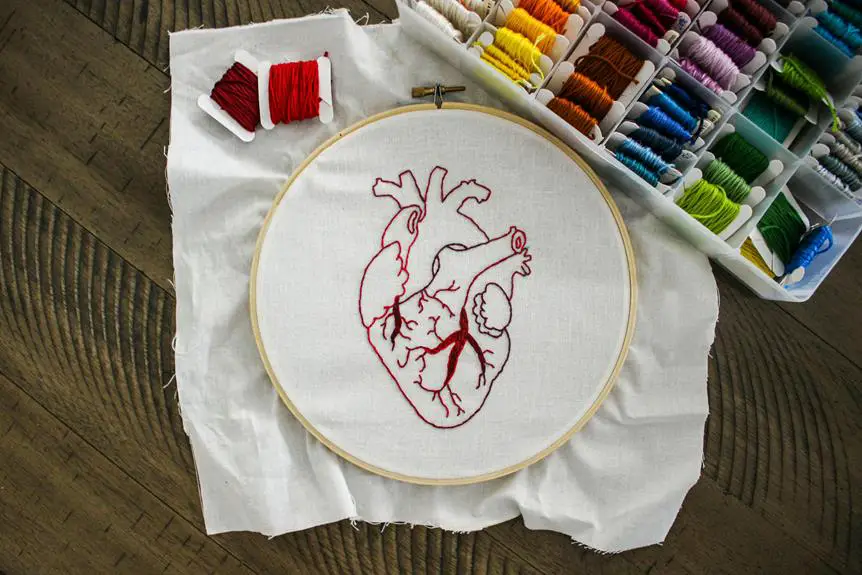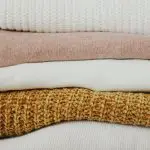You're likely familiar with the soft, fuzzy texture of chenille fabric, but have you ever wondered how it's made? Chenille's unique characteristics start with its yarn, which is created through a specialized process that involves carding, brushing, and spinning fibers into a unique yarn. But what makes this yarn so special, and how does it get transformed into the plush fabric you know and love? As you explore the world of chenille, you'll discover a rich history, a meticulous manufacturing process, and a range of applications that'll make you appreciate this fabric in a whole new way.
Table of Contents
History of Chenille Fabric
Chenille fabric's history dates back to the 18th century when it originated in France, with the term 'chenille' derived from the French word for caterpillar, aptly describing the fuzzy, caterpillar-like pile that's characteristic of this unique fabric.
You'll find that the country's rich textile history played a significant role in the development of chenille. Initially, chenille fabric was made from wool, but it wasn't until the Industrial Revolution that it gained popularity.
During this time, new manufacturing techniques made it possible to mass-produce chenille fabric.
As the years passed, you saw the introduction of new materials like cotton and silk, which further expanded the possibilities for chenille fabric.
The fabric's versatility and durability made it a favorite among textile manufacturers and consumers alike. By the mid-20th century, chenille fabric had become a staple in the textile industry, with countries like the United States and the United Kingdom also contributing to its production.
Today, you can find chenille fabric in a wide range of applications, from clothing and home decor to upholstery and industrial uses. Its history may have begun in France, but chenille fabric has become a global phenomenon.
Characteristics of Chenille Yarn
Chenille yarn is known for its soft, fuzzy, and velvety texture, which is achieved through a specific type of twist.
When you run your hand over chenille yarn, you'll notice that it has a gentle give, making it incredibly comfortable against the skin. This is due to the yarn's low density and loose twist, which allows it to trap warm air and provide excellent insulation.
Another characteristic of chenille yarn is its durability. Despite its softness, chenille yarn is surprisingly resistant to pilling and snagging, making it a great choice for garments that need to withstand regular wear and tear.
Additionally, chenille yarn is often blended with other fibers, such as cotton or polyester, to enhance its strength and stability. This blending process also allows manufacturers to create a wide range of colors and textures, making chenille yarn a versatile choice for crafters and designers.
The Chenille Manufacturing Process
Chenille fabric is made using a unique combination of carding, spinning, and weaving techniques. The process begins with preparing the fibers, which can come from a variety of sources such as cotton, polyester, or a blend. The fibers are carded, which means they're brushed to align them in the same direction. This process produces a rope-like strand called a sliver.
The sliver is then spun into yarn. This is done by drawing out the fibers and twisting them together to create a continuous thread. Chenille yarn is unique because it has a fuzzy texture, which is achieved by using a special type of spinning machine. The yarn is then wound onto spools, ready to be woven or knitted into fabric.
The chenille yarn is then woven into fabric using a loom or a knitting machine. The yarn is woven in a way that creates a soft, plush pile on one side of the fabric, giving chenille its characteristic texture. Throughout the manufacturing process, quality control is crucial to ensure that the final product meets the desired standards.
Types of Chenille Fabric
With its unique texture and versatility, chenille fabric comes in a variety of types, each with its own distinct characteristics and uses. You'll find that some types of chenille fabric are better suited for specific projects or applications.
For example, cotton chenille is a popular choice for home decor and upholstery, as it's durable and easy to clean. On the other hand, polyester chenille is often used for clothing and accessories, as it's lightweight and quick-drying.
You may also come across blended chenille fabrics, which combine the benefits of different fibers. These blends can offer improved strength, softness, or wrinkle resistance, making them ideal for a range of applications.
Additionally, some chenille fabrics are treated with special finishes or coatings to enhance their performance or appearance. For instance, some chenille fabrics may be treated with stain resistance or UV protection.
As you explore the world of chenille fabric, you'll discover the unique qualities of each type and how they can be used to create a wide range of products. By understanding the different types of chenille fabric, you can make informed decisions for your projects.
Uses and Applications of Chenille
Considering its unique texture and versatility, chenille fabric lends itself to a wide range of uses and applications, from home decor and upholstery to clothing and accessories, allowing you to get creative with your projects. You can use chenille fabric to create cozy throw blankets, plush rugs, and comfortable pillows that add warmth and texture to your living space. In fashion, chenille is often used to make soft, chunky sweaters, hats, and scarves that are perfect for colder climates.
| Use | Description | Example Project |
|---|---|---|
| Home Decor | Add texture and warmth to your living space | Chenille throw blanket |
| Clothing | Create soft, chunky garments | Chenille sweater |
| Accessories | Make stylish and cozy accessories | Chenille hat and scarf set |
When working with chenille fabric, you'll find that it's easy to care for and can be machine washed and dried. This makes it a great choice for busy people who want to create practical and stylish projects. With its versatility and ease of use, chenille fabric is an excellent choice for crafters and DIY enthusiasts who want to add a touch of texture and warmth to their projects.
Frequently Asked Questions
Can I Make My Own Chenille Fabric at Home?
You can create your own chenille fabric at home with a bit of patience and the right tools. You'll need a loom or a simple frame, yarn, and a pair of scissors, and you're ready to get started.
Is Chenille Fabric Suitable for People With Sensitive Skin?
If you have sensitive skin, you'll be relieved to know that chenille fabric is generally gentle. You'll find it's often used in clothing for people with skin issues, as it's soft, breathable, and hypoallergenic.
Can Chenille Fabric Be Used for Outdoor Upholstery?
When choosing outdoor upholstery, you'll want durable, weather-resistant options. Chenille fabric can work, but it's not the best choice due to its soft, fuzzy pile, which can absorb moisture and fade in sunlight.
How Do I Care for Chenille Fabric to Prevent Pilling?
To prevent pilling on chenille fabric, you'll want to wash it in cold water, avoid using fabric softener, and gently remove excess water without wringing or twisting. You'll also want to dry it on a low heat setting.
Is Chenille Fabric Prone to Moth Damage?
You might worry that chenille fabric's softness makes it a moth magnet, but it's actually quite resistant. However, you should still store it in airtight containers or use natural moth repellents to keep those pesky critters away.
- Tetron Fabric for Marine Applications: Durability and Use Cases - June 18, 2025
- Tetron Fabric for Outdoor Furniture: Weather Resistance and Care - June 18, 2025
- Tetron Fabric for Wall Coverings: Style and Application Tips - June 18, 2025






